Archives
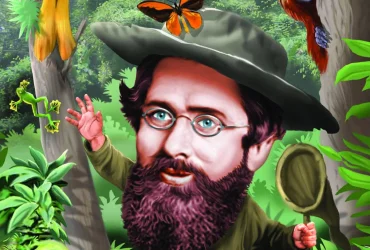 v7i3.189
v7i3.189ISSN: 1800-427X (print)
eISSN: 1800-427X (online)
Alfred Russel Wallace Centenary Issue
DOI:10.47605/tapro.v7i3.189
Proceedings of the Second International Conference on Alfred Russel Wallace and the Wallacea
Organised by the Indonesian Academy of Sciences
Wakatobi - Indonesia (10–13 November 2013)
J. Supriatna, A.A.T. Amarasinghe, and C. Margules (Editors)
Published date: 30 July 2015
Pp. 170–192, Pls. 10–12.
PRIMATES OF SULAWESI: AN UPDATE ON HABITAT DISTRIBUTION, POPULATION AND CONSERVATION
Jatna Supriatna*, Nurul L. Winarni & Asri A. Dwiyahreni
*Corresponding author. E-mail: jatna.supriatna@gmail.com
Abstract
Wallacea holds great significance not only for evolution and biogeography but also for conservation. No less than 98 species of Wallacea’s endemic mammals, birds, and amphibians appear on the IUCN Red List of globally threatened species. The primates of Wallacea show high diversity and endemicity within a very narrow range. There are 20 species of primates in Wallacea, of which 18 are found only in Sulawesi and the surrounding islands. Among those, three have been described as new species in only the last 10 years, Tarsius tumpara, T. wallacei, and T. lariang. Their habitat is located outside of existing protected areas, which means they need special consideration for their conservation. T. tumpara is one of the 25 rarest primates in the world while Macaca nigra from North Sulawesi has been included as an endangered species on the IUCN Red List. GIS analysis of the habitats of those endemic species shows that the extent of their habitats is shrinking dramatically in North and South Sulawesi and on the small islands of the north and east coast of Sulawesi.
Key words : Sulawesi, endangered, endemic, mammals, protected areas, Tarsius, Wallacea
eISSN: 1800-427X (online)
Alfred Russel Wallace Centenary Issue
DOI:10.47605/tapro.v7i3.189
Proceedings of the Second International Conference on Alfred Russel Wallace and the Wallacea
Organised by the Indonesian Academy of Sciences
Wakatobi - Indonesia (10–13 November 2013)
J. Supriatna, A.A.T. Amarasinghe, and C. Margules (Editors)
Published date: 30 July 2015
Pp. 170–192, Pls. 10–12.
PRIMATES OF SULAWESI: AN UPDATE ON HABITAT DISTRIBUTION, POPULATION AND CONSERVATION
Jatna Supriatna*, Nurul L. Winarni & Asri A. Dwiyahreni
*Corresponding author. E-mail: jatna.supriatna@gmail.com
Abstract
Wallacea holds great significance not only for evolution and biogeography but also for conservation. No less than 98 species of Wallacea’s endemic mammals, birds, and amphibians appear on the IUCN Red List of globally threatened species. The primates of Wallacea show high diversity and endemicity within a very narrow range. There are 20 species of primates in Wallacea, of which 18 are found only in Sulawesi and the surrounding islands. Among those, three have been described as new species in only the last 10 years, Tarsius tumpara, T. wallacei, and T. lariang. Their habitat is located outside of existing protected areas, which means they need special consideration for their conservation. T. tumpara is one of the 25 rarest primates in the world while Macaca nigra from North Sulawesi has been included as an endangered species on the IUCN Red List. GIS analysis of the habitats of those endemic species shows that the extent of their habitats is shrinking dramatically in North and South Sulawesi and on the small islands of the north and east coast of Sulawesi.
Key words : Sulawesi, endangered, endemic, mammals, protected areas, Tarsius, Wallacea
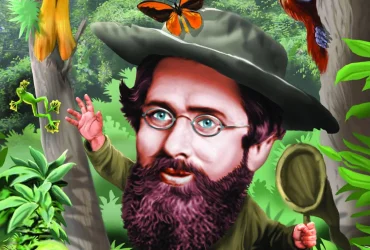 v7i3.188
v7i3.188ISSN: 1800-427X (print)
eISSN: 1800-427X (online)
Alfred Russel Wallace Centenary Issue
DOI:10.47605/tapro.v7i3.188
Proceedings of the Second International Conference on Alfred Russel Wallace and the Wallacea
Organised by the Indonesian Academy of Sciences
Wakatobi - Indonesia (10–13 November 2013)
J. Supriatna, A.A.T. Amarasinghe, and C. Margules (Editors)
Published date: 30 July 2015
Pp. 157–169, Pls. 8–9.
EX-SITU CONSERVATION OF PLANT SPECIES IN INDONESIA WITH A FOCUS ON WALLACEA
Ismayadi Samsoedin*, Kuswata Kartawinata & Ugi Sugiarti
*Corresponding author. E-mail: isamsoedin@yahoo.com
Abstract
Biodiversity conservation is a national priority in Indonesia as a part of the implementation of sustainable development. Both in-situ and ex-situ conservation should be practised so as to make certain that biodiversity can be conserved, studied and sustainably utilized. The Indonesian Institute of Sciences (LIPI) and Ministry of Environment & Forestry (KLHK) are responsible for the conservation of biodiversity as the scientific authority and management authority, respectively. Several pathways of ex-situ conservation may be undertaken through restoration of degraded ecosystems, improvement of fallows, development of arboreta, botanical gardens (BG), city parks, and biodiversity parks, planting road-side trees and rehabilitation of degraded lands using indigenous species, particularly rare and protected species. Ex-situ conservation of plant species through the above-mentioned pathways will become increasingly important, as in-situ conservation is facing many constraints. Several sites in Wallacea have been designated as ex-situ conservation areas such as the Toraut Arboretum at Bogani Nani Warta Bone in North Sulawesi [proposed by the Wallacea Development Institute (WDI), and established by local government in 1994], and five new botanical gardens: Massenrempulu, Jompie, Minahasa, Pucak, and Kendari. This paper describes the roles of the floristic conservation pathways and outlines the development of the above-mentioned arboretum and botanical gardens as case examples.
Key words : arboretum, biodiversity parks, botanical gardens, indigenous, city parks, Sulawesi
eISSN: 1800-427X (online)
Alfred Russel Wallace Centenary Issue
DOI:10.47605/tapro.v7i3.188
Proceedings of the Second International Conference on Alfred Russel Wallace and the Wallacea
Organised by the Indonesian Academy of Sciences
Wakatobi - Indonesia (10–13 November 2013)
J. Supriatna, A.A.T. Amarasinghe, and C. Margules (Editors)
Published date: 30 July 2015
Pp. 157–169, Pls. 8–9.
EX-SITU CONSERVATION OF PLANT SPECIES IN INDONESIA WITH A FOCUS ON WALLACEA
Ismayadi Samsoedin*, Kuswata Kartawinata & Ugi Sugiarti
*Corresponding author. E-mail: isamsoedin@yahoo.com
Abstract
Biodiversity conservation is a national priority in Indonesia as a part of the implementation of sustainable development. Both in-situ and ex-situ conservation should be practised so as to make certain that biodiversity can be conserved, studied and sustainably utilized. The Indonesian Institute of Sciences (LIPI) and Ministry of Environment & Forestry (KLHK) are responsible for the conservation of biodiversity as the scientific authority and management authority, respectively. Several pathways of ex-situ conservation may be undertaken through restoration of degraded ecosystems, improvement of fallows, development of arboreta, botanical gardens (BG), city parks, and biodiversity parks, planting road-side trees and rehabilitation of degraded lands using indigenous species, particularly rare and protected species. Ex-situ conservation of plant species through the above-mentioned pathways will become increasingly important, as in-situ conservation is facing many constraints. Several sites in Wallacea have been designated as ex-situ conservation areas such as the Toraut Arboretum at Bogani Nani Warta Bone in North Sulawesi [proposed by the Wallacea Development Institute (WDI), and established by local government in 1994], and five new botanical gardens: Massenrempulu, Jompie, Minahasa, Pucak, and Kendari. This paper describes the roles of the floristic conservation pathways and outlines the development of the above-mentioned arboretum and botanical gardens as case examples.
Key words : arboretum, biodiversity parks, botanical gardens, indigenous, city parks, Sulawesi
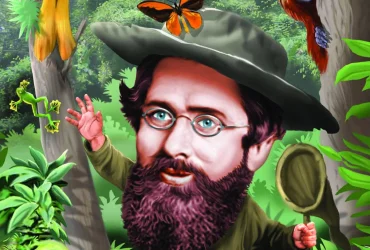 v7i3.187
v7i3.187ISSN: 1800-427X (print)
eISSN: 1800-427X (online)
Alfred Russel Wallace Centenary Issue
DOI:10.47605/tapro.v7i3.187
Proceedings of the Second International Conference on Alfred Russel Wallace and the Wallacea
Organised by the Indonesian Academy of Sciences
Wakatobi - Indonesia (10–13 November 2013)
J. Supriatna, A.A.T. Amarasinghe, and C. Margules (Editors)
Published date: 30 July 2015
Pp. 151–156.
GEOGRAPHICAL AND GENETIC DIVERSITY OF HEPATITIS B VIRUS IN THE WALLACEA, INDONESIA
Meta Dewi Thedja & David Handojo Muljono*
*Corresponding author. E-mail: davidhm@eijkman.go.id
Abstract
Ambon Bay is situated in the Wallacea biogeographical area. Despite various studies on marine natural resources reported from this bay, limited information is available on marine bacteria that produce compounds with potential biotechnological applications. We report here preliminary results of our attempt to isolate bacteria of this group from Ambon Bay. Nine different isolates were obtained, but only eight indicated potential as producers of compounds with biotechnological potential. Two isolates indicated agarolytic bacteria characteristics, whereas one showed the properties of exopolysaccharide (EPS) producing bacteria. Three isolates produced various pigments. Two were identified tentatively as members of actinomycetes, a group known as a prolific producer of antimicrobial compounds. Preliminary identification of the cell morphologies of each isolate revealed the dominance of cocci-shaped bacteria. Most of them showed optimal growth in 1 to 7 days when incubated at 30°C. These results indicate that Ambon Bay waters and the surrounding area could harbour marine bacteria with potential features for biotechnological applications.
Key words : genetic diversity, genotype, hepatitis B virus (HBV), subgenotypes
eISSN: 1800-427X (online)
Alfred Russel Wallace Centenary Issue
DOI:10.47605/tapro.v7i3.187
Proceedings of the Second International Conference on Alfred Russel Wallace and the Wallacea
Organised by the Indonesian Academy of Sciences
Wakatobi - Indonesia (10–13 November 2013)
J. Supriatna, A.A.T. Amarasinghe, and C. Margules (Editors)
Published date: 30 July 2015
Pp. 151–156.
GEOGRAPHICAL AND GENETIC DIVERSITY OF HEPATITIS B VIRUS IN THE WALLACEA, INDONESIA
Meta Dewi Thedja & David Handojo Muljono*
*Corresponding author. E-mail: davidhm@eijkman.go.id
Abstract
Ambon Bay is situated in the Wallacea biogeographical area. Despite various studies on marine natural resources reported from this bay, limited information is available on marine bacteria that produce compounds with potential biotechnological applications. We report here preliminary results of our attempt to isolate bacteria of this group from Ambon Bay. Nine different isolates were obtained, but only eight indicated potential as producers of compounds with biotechnological potential. Two isolates indicated agarolytic bacteria characteristics, whereas one showed the properties of exopolysaccharide (EPS) producing bacteria. Three isolates produced various pigments. Two were identified tentatively as members of actinomycetes, a group known as a prolific producer of antimicrobial compounds. Preliminary identification of the cell morphologies of each isolate revealed the dominance of cocci-shaped bacteria. Most of them showed optimal growth in 1 to 7 days when incubated at 30°C. These results indicate that Ambon Bay waters and the surrounding area could harbour marine bacteria with potential features for biotechnological applications.
Key words : genetic diversity, genotype, hepatitis B virus (HBV), subgenotypes
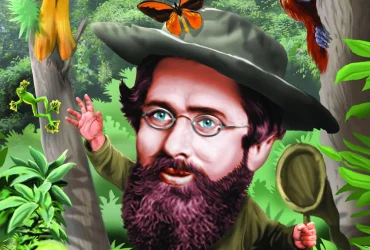 v7i3.186
v7i3.186ISSN: 1800-427X (print)
eISSN: 1800-427X (online)
Alfred Russel Wallace Centenary Issue
DOI:10.47605/tapro.v7i3.186
Proceedings of the Second International Conference on Alfred Russel Wallace and the Wallacea
Organised by the Indonesian Academy of Sciences
Wakatobi - Indonesia (10–13 November 2013)
J. Supriatna, A.A.T. Amarasinghe, and C. Margules (Editors)
Published date: 30 July 2015
Pp. 143–150, Pls. 5–7.
ISOLATION OF MARINE BACTERIA IN AMBON BAY WITH POTENTIAL BIOTECHNOLOGICAL FEATURES
Yosmina Tapilatu*
*Corresponding author. E-mail: yosmina.tapilatu@lipi.go.id
Abstract
Ambon Bay is situated in the Wallacea biogeographical area. Despite various studies on marine natural resources reported from this bay, limited information is available on marine bacteria that produce compounds with potential biotechnological applications. We report here preliminary results of our attempt to isolate bacteria of this group from Ambon Bay. Nine different isolates were obtained, but only eight indicated potential as producers of compounds with biotechnological potential. Two isolates indicated agarolytic bacteria characteristics, whereas one showed the properties of exopolysaccharide (EPS) producing bacteria. Three isolates produced various pigments. Two were identified tentatively as members of actinomycetes, a group known as a prolific producer of antimicrobial compounds. Preliminary identification of the cell morphologies of each isolate revealed the dominance of cocci-shaped bacteria. Most of them showed optimal growth in 1 to 7 days when incubated at 30°C. These results indicate that Ambon Bay waters and the surrounding area could harbour marine bacteria with potential features for biotechnological applications.
Key words : eastern Indonesia, marine bacteria, secondary metabolites, Wallacea marine area
eISSN: 1800-427X (online)
Alfred Russel Wallace Centenary Issue
DOI:10.47605/tapro.v7i3.186
Proceedings of the Second International Conference on Alfred Russel Wallace and the Wallacea
Organised by the Indonesian Academy of Sciences
Wakatobi - Indonesia (10–13 November 2013)
J. Supriatna, A.A.T. Amarasinghe, and C. Margules (Editors)
Published date: 30 July 2015
Pp. 143–150, Pls. 5–7.
ISOLATION OF MARINE BACTERIA IN AMBON BAY WITH POTENTIAL BIOTECHNOLOGICAL FEATURES
Yosmina Tapilatu*
*Corresponding author. E-mail: yosmina.tapilatu@lipi.go.id
Abstract
Ambon Bay is situated in the Wallacea biogeographical area. Despite various studies on marine natural resources reported from this bay, limited information is available on marine bacteria that produce compounds with potential biotechnological applications. We report here preliminary results of our attempt to isolate bacteria of this group from Ambon Bay. Nine different isolates were obtained, but only eight indicated potential as producers of compounds with biotechnological potential. Two isolates indicated agarolytic bacteria characteristics, whereas one showed the properties of exopolysaccharide (EPS) producing bacteria. Three isolates produced various pigments. Two were identified tentatively as members of actinomycetes, a group known as a prolific producer of antimicrobial compounds. Preliminary identification of the cell morphologies of each isolate revealed the dominance of cocci-shaped bacteria. Most of them showed optimal growth in 1 to 7 days when incubated at 30°C. These results indicate that Ambon Bay waters and the surrounding area could harbour marine bacteria with potential features for biotechnological applications.
Key words : eastern Indonesia, marine bacteria, secondary metabolites, Wallacea marine area
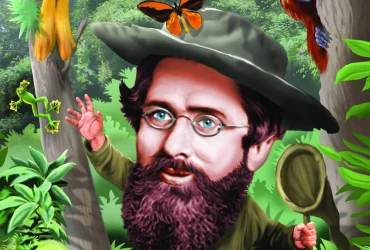 v7i3.185
v7i3.185ISSN: 1800-427X (print)
eISSN: 1800-427X (online)
Alfred Russel Wallace Centenary Issue
DOI:10.47605/tapro.v7i3.185
Proceedings of the Second International Conference on Alfred Russel Wallace and the Wallacea
Organised by the Indonesian Academy of Sciences
Wakatobi - Indonesia (10–13 November 2013)
J. Supriatna, A.A.T. Amarasinghe, and C. Margules (Editors)
Published date: 30 July 2015
Pp. 131–142, Pls. 1–4.
MINING MICROBIAL SYMBIONTS FOR SPONGE-DERIVED NATURAL PRODUCTS: IMPLICATIONS FOR THE WALLACEA
Christine M. Theodore & Phillip Crews*
*Corresponding author. E-mail: pcrews@ucsc.edu
Abstract
The Indonesian Coral Triangle is a biodiversity hotspot bisected by the Wallace line. It is becoming clear that ecological and anthropogenic factors are impacting the region. Our research is focused on the biosynthetic products of sponges. These natural products, which are beneficial to human health, will be lost if biodiversity were to decrease. For decades, chemists have looked to marine sponges as a source of novel pharmaceuticals. Over time, there has been growing suspicion these metabolites may actually be produced by microbial symbionts. Herein, we discuss a brief history of sponge natural products chemistry. Sponge associated microorganisms and their likely role in the production of clinically relevant compounds are explored through three case studies. The potential intellectual and pharmaceutical impact locked within the sponges of the Indonesian Coral Triangle is immense. We conclude that conservation, protection and management of this resource are vital from an ecological and human health perspective.
Key words : Bacteria, bengamide, fijianolide, Indonesian Coral Triangle, psymberin, symbiosis
eISSN: 1800-427X (online)
Alfred Russel Wallace Centenary Issue
DOI:10.47605/tapro.v7i3.185
Proceedings of the Second International Conference on Alfred Russel Wallace and the Wallacea
Organised by the Indonesian Academy of Sciences
Wakatobi - Indonesia (10–13 November 2013)
J. Supriatna, A.A.T. Amarasinghe, and C. Margules (Editors)
Published date: 30 July 2015
Pp. 131–142, Pls. 1–4.
MINING MICROBIAL SYMBIONTS FOR SPONGE-DERIVED NATURAL PRODUCTS: IMPLICATIONS FOR THE WALLACEA
Christine M. Theodore & Phillip Crews*
*Corresponding author. E-mail: pcrews@ucsc.edu
Abstract
The Indonesian Coral Triangle is a biodiversity hotspot bisected by the Wallace line. It is becoming clear that ecological and anthropogenic factors are impacting the region. Our research is focused on the biosynthetic products of sponges. These natural products, which are beneficial to human health, will be lost if biodiversity were to decrease. For decades, chemists have looked to marine sponges as a source of novel pharmaceuticals. Over time, there has been growing suspicion these metabolites may actually be produced by microbial symbionts. Herein, we discuss a brief history of sponge natural products chemistry. Sponge associated microorganisms and their likely role in the production of clinically relevant compounds are explored through three case studies. The potential intellectual and pharmaceutical impact locked within the sponges of the Indonesian Coral Triangle is immense. We conclude that conservation, protection and management of this resource are vital from an ecological and human health perspective.
Key words : Bacteria, bengamide, fijianolide, Indonesian Coral Triangle, psymberin, symbiosis
Hubungi Kami
The ultimate aim of the journal is to provide an effective medium for communication of the latest and best scientific information.
Copyright © 2020 Taprobanica. All Rights Reserved
Jasa Pembuatan Website by IKT




